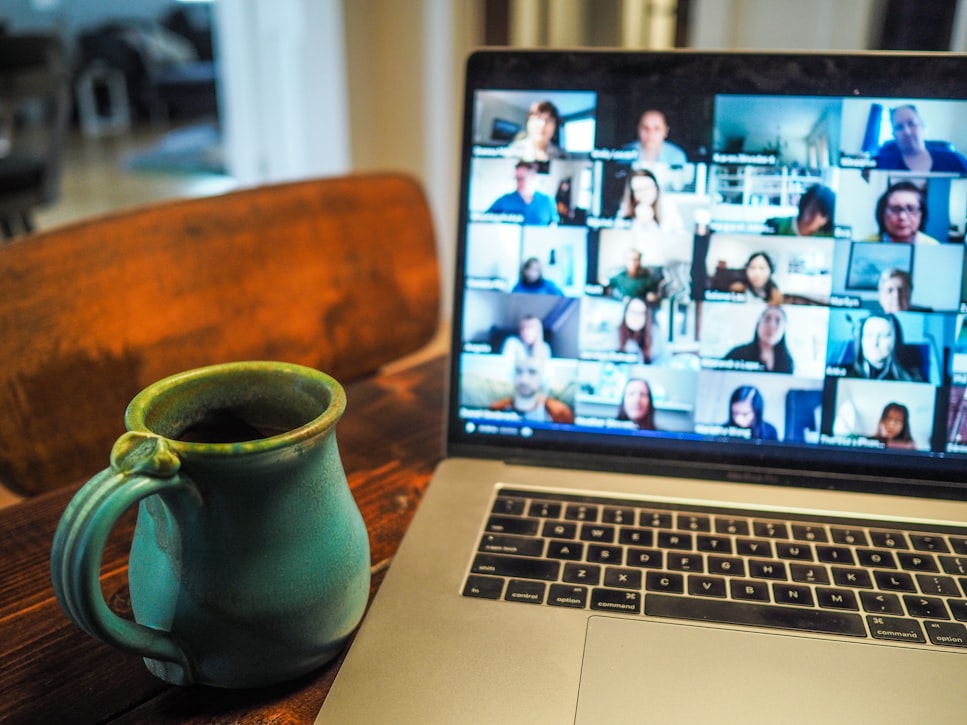With many Americans transitioning to the work from home environment, due to COVID-19, the number of virtual presentations has skyrocketed.
Some people are naturally comfortable in front of a camera, but others find themselves fidgeting, nervous, and uncomfortable. As 94 percent of businesses claim that video conferencing increases productivity, it likely isn’t going to leave us anytime soon.
Therefore, if you do feel nervous and uncomfortable, take some time to address these concerns. Here are a few of our top recommendations to help you feel more comfortable in front of your webcam.
Strengthen Your Posture
Just as you would in a typical business meeting, use great posture. It will not only make you physically look better on camera, but you will also feel more attentive and alert.
Multiple studies have proven the correlation between confidence and posture. Amy Cuddy, a TED Talk speaker, went one step further to prove the significance of posture by performing an experiment. The experiment showed that people that used strong, erect posture experienced an 8 percent increase in testosterone whereas those that slouched experienced a 10 percent decrease in hormones.
Focus on The Camera
Another distraction that can easily knock anyone off their game is not knowing where to direct their focus. If looking at the other person on screen or seeing yourself is a distraction, consider focusing only on your camera’s eye. If you’re nervous, this will help give you a focal point to keep returning to and will help minimize distractions, both onscreen and off.
Remember, even though the presentation is virtual, it’s still important to utilize your stage presence. Powerful body language, voice, and senses are critical to keeping your audience engaged.

Test Your Equipment Before The Call
One of the most embarrassing things that can happen on a video call is that the other person can’t hear you. This can happen if you recently used a different microphone, so be sure that the input settings are correct.
Fortunately, Zoom has a test meeting, where you can check if your mic and camera are working properly. Try this at least 10 minutes before the meeting to ensure that your equipment is working and to give you ample time to adjust the settings. If it’s your first time doing a video conference call, try it out the day before so that you aren’t rushed to fix any problems.
In addition to testing your microphone and camera, be sure to also have a secure wifi connection. Nothing is more frustrating than being live and hearing a delay on the other person’s end. It’s incredibly difficult to have a coherent conversation when half the time you continue repeating, “Can you hear me?”
Raise Your Camera
If your physical appearance makes you nervous on camera, one hack you can use is to raise your laptop or webcam so that you are gazing just slightly up at the webcam or level with it.
When your webcam is higher than you, the audience will have a much better view of your face rather than your chin.
You can raise it with books, a higher desk or even a shorter chair. This will help you feel more comfortable knowing you’re at least seated at a more attractive angle.
Sit Facing The Light
Finally, one of the biggest video conferencing pet peeves is when the person you’re talking with is backlit. This usually happens when you sit directly in front of a window. Instead, sit in front of a wall and, if there’s a light in the middle of the room, turn that on so that it illuminates your face.
This will help people better see your face and it will make you feel more at ease too.
Conclusion
If you’re nervous about getting in front of your webcam, that’s completely normal. However, using these tips and tricks will make you feel more comfortable on your webcam than ever before.


